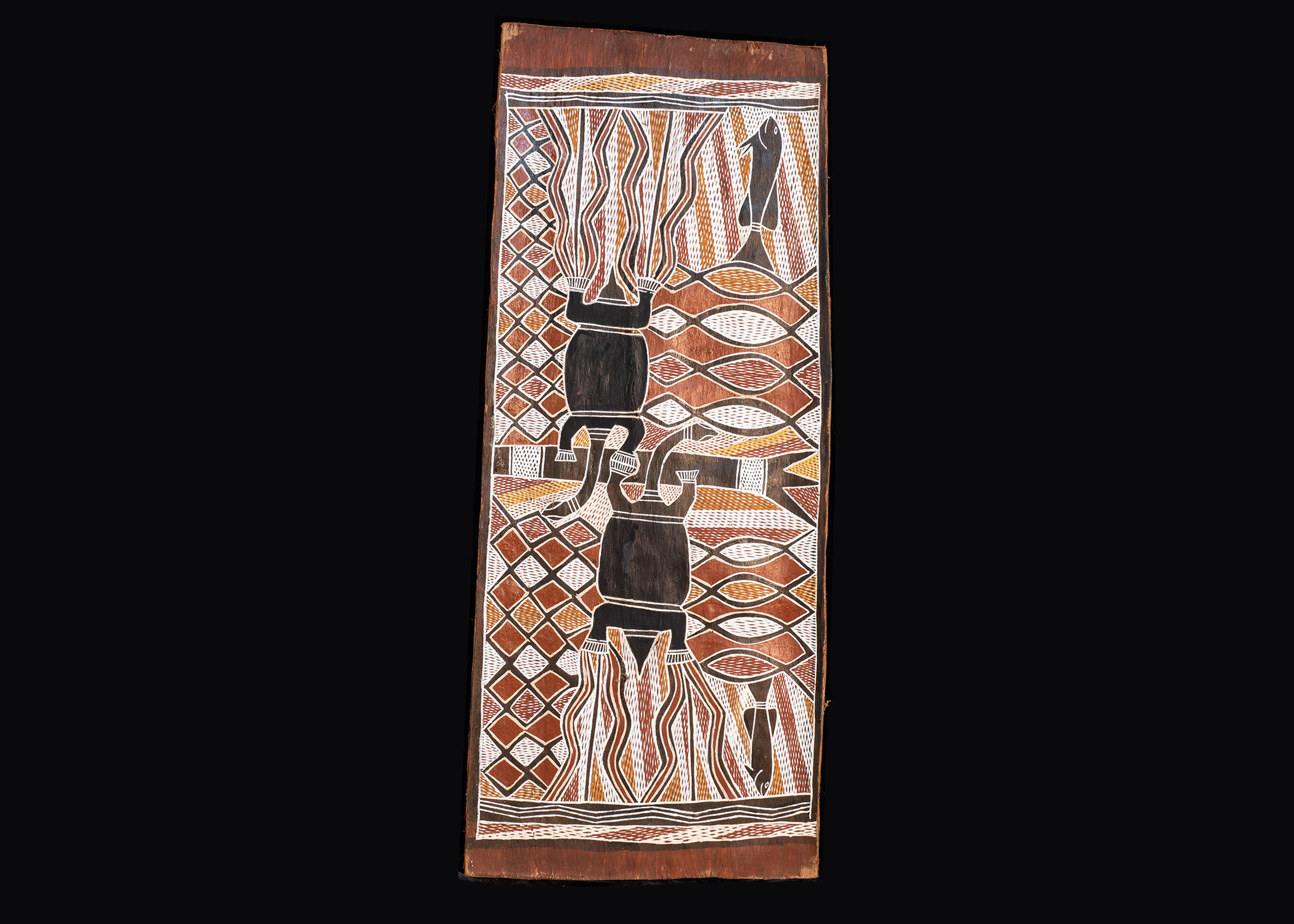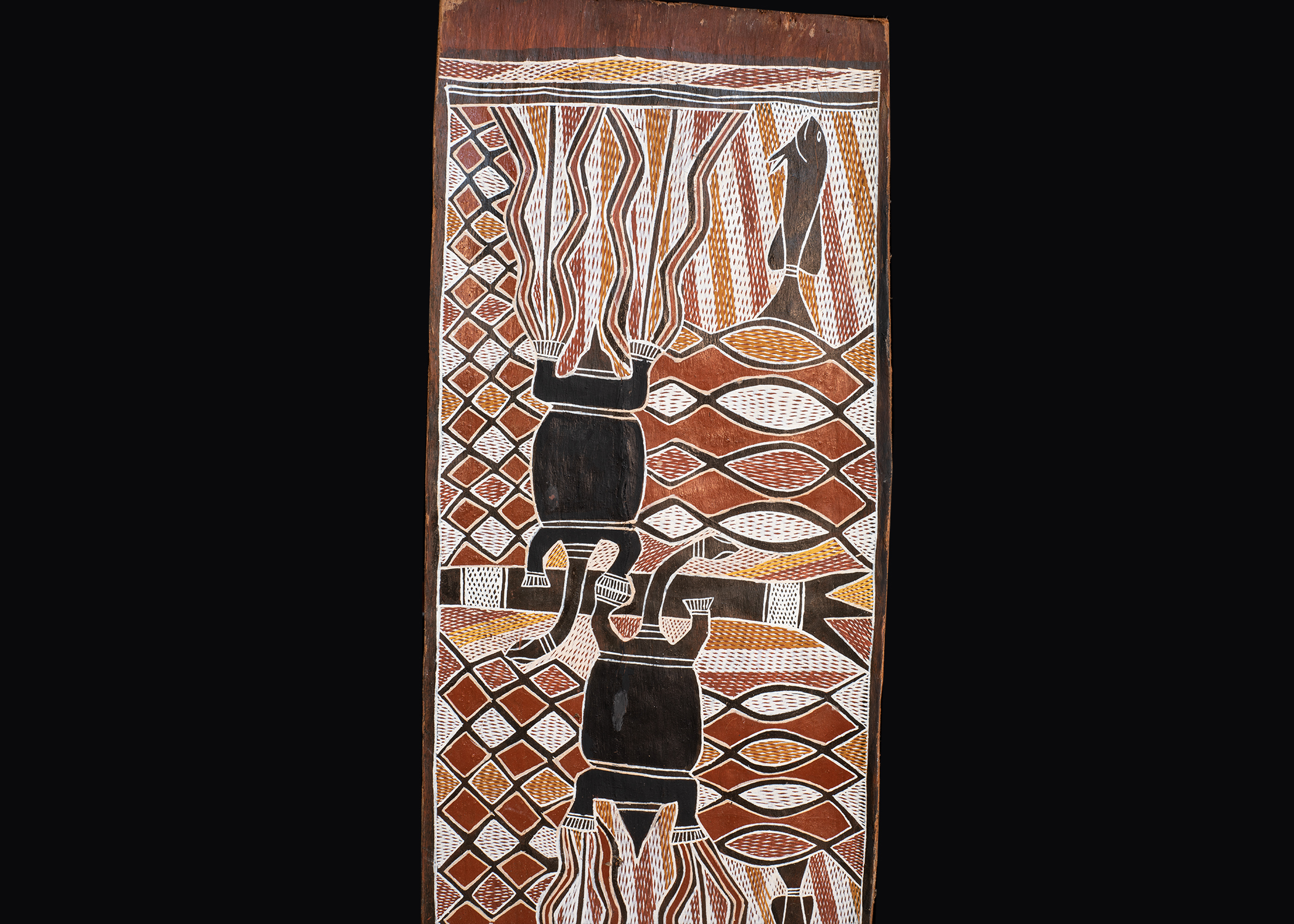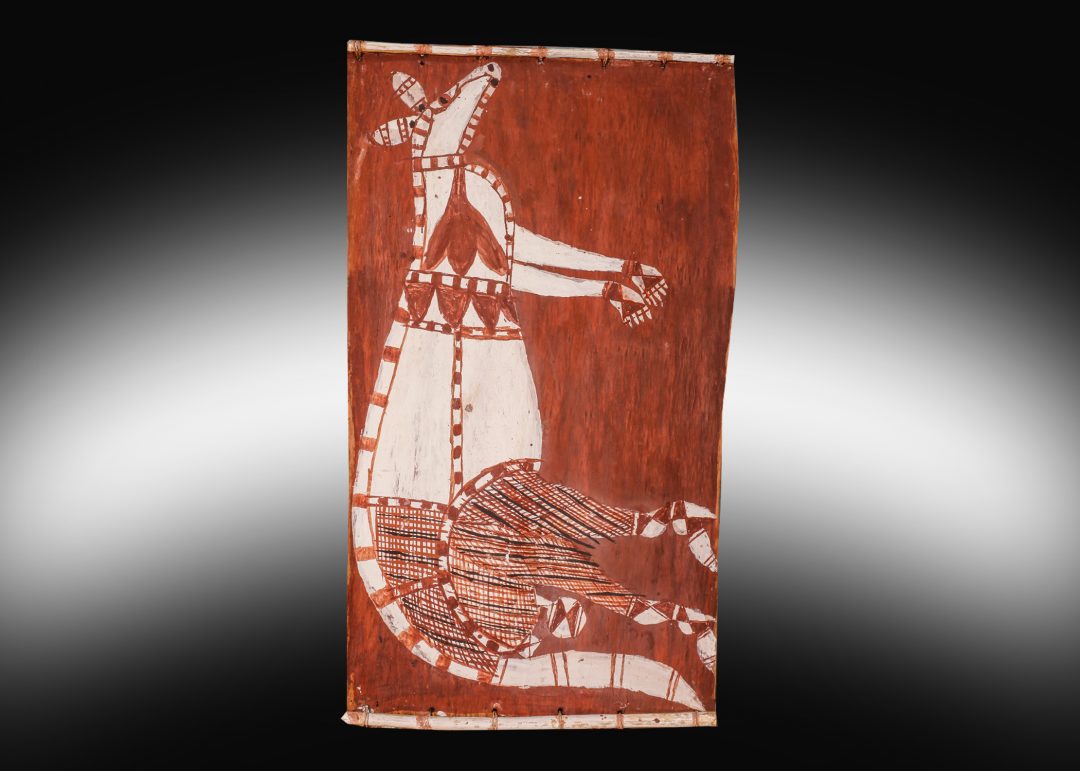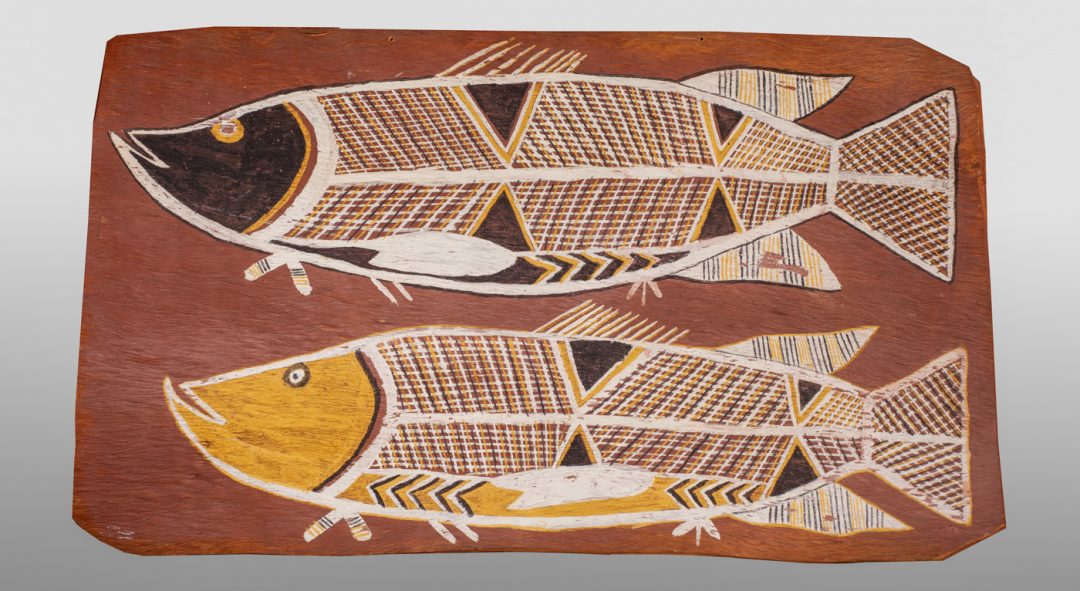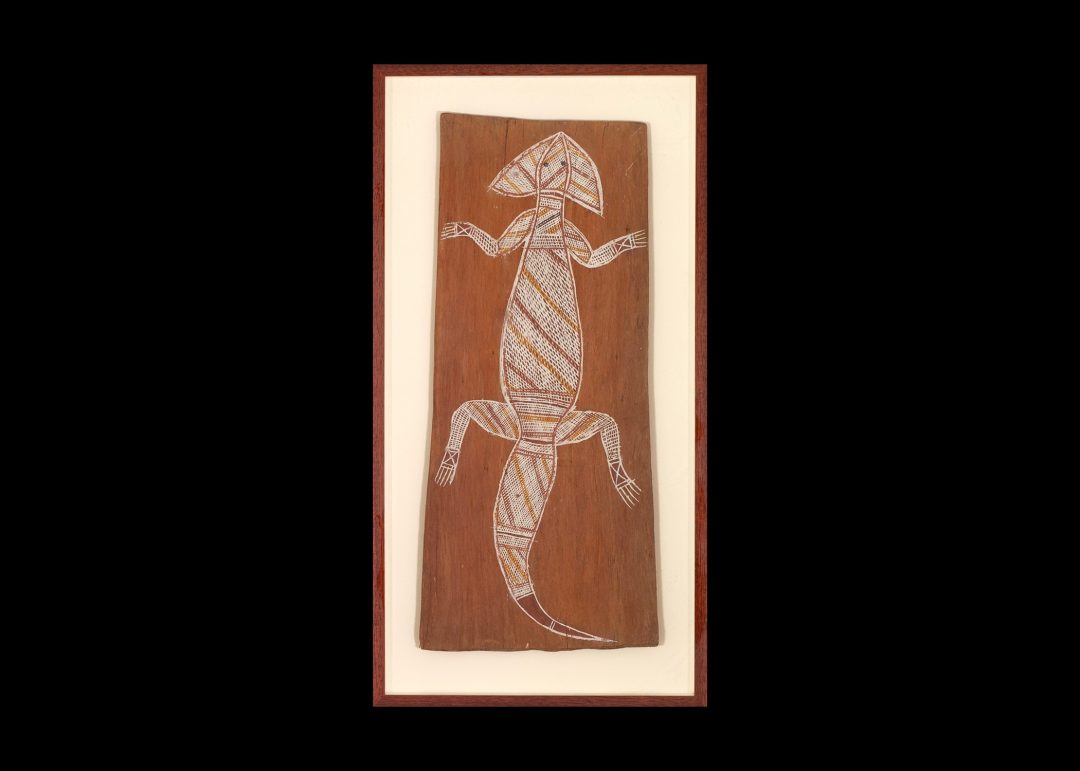Dreamtime story of Barama and Laindjung
-
TitleLong Neck Tortoises and the Dreamtime story of Barama and Laindjung
-
ArtistGawirrin Gumana
-
LocationNorth East Arnhem Land
-
Date1969
- Size77cm (L) x 32cm (W)
-
PriceSOLD
This bark painting relates to the ancestral beings, Barama and Laindjung, the instigators of religious ritual and doctrine for the Yirritja moiety. Everything in the Yolŋu belief system, is made up of two moieties, the Yirritja and the Dhuwa moieties.
The painting depicts an aspect of the myth cycle of Barama coming to Arnhem Land. The central horizontal element is the log on which Barama floated down the river on. Its also became a rangga or totemic emblem . The prongs on the right are the roots of the tree.
There are two freshwater tortoises with their heads resting on the log. These are also totems or rangga. The pattern with the oval shapes to the right side of each tortoise represents the sacred design that was on the thighs of Barama as he emerged from the water. It represents pools of salt water trapped in holes after the receding tide. The regular diamond pattern to the left is the Nargala mala pattern of the freshwater tortoise which symbolizes moving through the weeds in the river. The lines at the feet of the tortoises represent the sea grass swaying in the water as they swim past.
Gawirrin Gumana, also known as Gawurin, Gouarin, Gawarrin, Gawirrin, Garwirin, Gawerin,
Gawirrin’s works are in the:
National Gallery of Victoria
National Gallery of Australia
National Museum of Australia
Australian National Maritime Museum
British Museum
Kluge Ruhe Aboriginlal Art Collection USA
This bark painting relates to the ancestral beings, Barama and Laindjung, the instigators of religious ritual and doctrine for the Yirritja moiety. Everything in the Yolŋu belief system, is made up of two moieties, the Yirritja and the Dhuwa moieties.
The painting depicts an aspect of the myth cycle of Barama coming to Arnhem Land. The central horizontal element is the log on which Barama floated down the river on. Its also became a rangga or totemic emblem . The prongs on the right are the roots of the tree.
There are two freshwater tortoises with their heads resting on the log. These are also totems or rangga. The pattern with the oval shapes to the right side of each tortoise represents the sacred design that was on the thighs of Barama as he emerged from the water. It represents pools of salt water trapped in holes after the receding tide. The regular diamond pattern to the left is the Nargala mala pattern of the freshwater tortoise which symbolizes moving through the weeds in the river. The lines at the feet of the tortoises represent the sea grass swaying in the water as they swim past.
Gawirrin Gumana, also known as Gawurin, Gouarin, Gawarrin, Gawirrin, Garwirin, Gawerin,
Gawirrin’s works are in the:
National Gallery of Victoria
National Gallery of Australia
National Museum of Australia
Australian National Maritime Museum
British Museum
Kluge Ruhe Aboriginlal Art Collection USA
